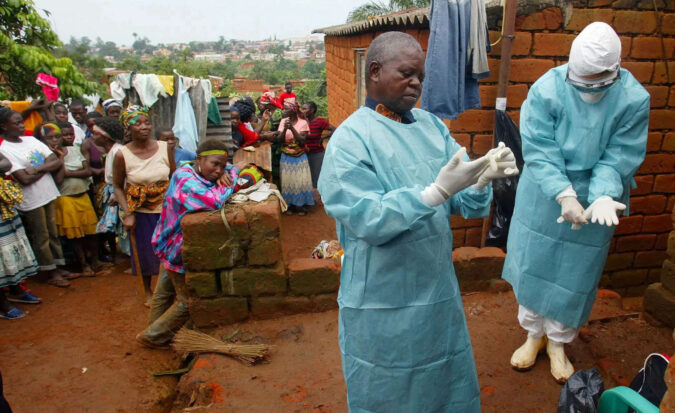DAR ES SALAAM: Tanzania on Friday declared the end of a deadly outbreak of the Marburg virus, more than two months after it was first confirmed, the World Health Organization (WHO) said.
A total of nine cases, eight confirmed and one probable, and six deaths were recorded in the outbreak of the haemorrhagic fever in the northwestern region of Kagera, the WHO said in a statement.
It was the first such outbreak in Tanzania, an East African country with a population of almost 62 million.
The Marburg virus is a highly dangerous microbe which causes severe fever, often accompanied by bleeding and organ failure.
It is part of the so-called filovirus family that also includes Ebola, which has wreaked havoc in several previous outbreaks in Africa.
Marburg is highly virulent has a fatality rate of up to 88 percent, the UN’s health agency said.
The last confirmed case of Marburg in Tanzania tested negative on April 19, setting off the 42-day mandatory countdown to declare the end of the outbreak, the WHO said.
The virus is transmitted to people from fruit bats and spreads among humans through direct contact with the bodily fluids of infected people, surfaces and materials, it added.
There are no vaccines or antiviral treatments approved to treat it.
A total of nine cases, eight confirmed and one probable, and six deaths were recorded in the outbreak of the haemorrhagic fever in the northwestern region of Kagera, the WHO said in a statement.
It was the first such outbreak in Tanzania, an East African country with a population of almost 62 million.
The Marburg virus is a highly dangerous microbe which causes severe fever, often accompanied by bleeding and organ failure.
It is part of the so-called filovirus family that also includes Ebola, which has wreaked havoc in several previous outbreaks in Africa.
Marburg is highly virulent has a fatality rate of up to 88 percent, the UN’s health agency said.
The last confirmed case of Marburg in Tanzania tested negative on April 19, setting off the 42-day mandatory countdown to declare the end of the outbreak, the WHO said.
The virus is transmitted to people from fruit bats and spreads among humans through direct contact with the bodily fluids of infected people, surfaces and materials, it added.
There are no vaccines or antiviral treatments approved to treat it.
